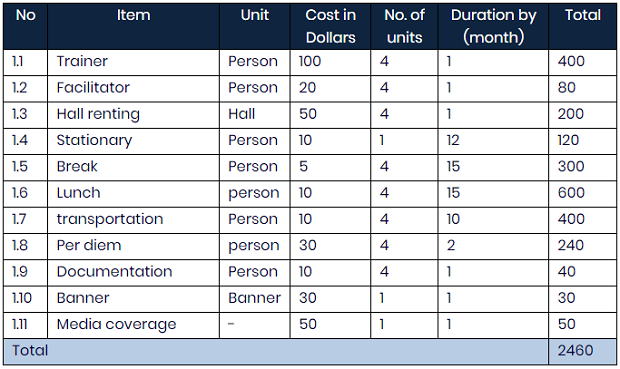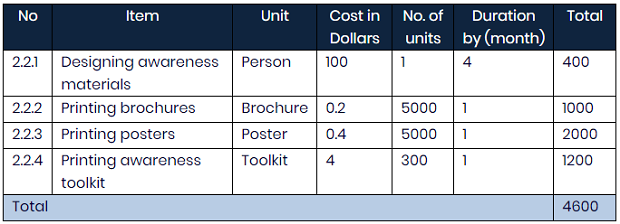Articles and How-to Tutorials for NGOs
Budget
Written by Adel SalahDonors use different forms of budget preparation, although they are similar in the key components, but we have to use the same donor’s form when preparing the project budget.
The budget’s main components
Project staff salaries and other related costs: This component includes all the jobs the project will need to cover and the coverage percentage.
Activities, materials, goods and supplies: This includes all activities that will be implemented by the organization. This component includes all the activities in which awareness materials printing, supplies and equipment are purchased and distributed to targeted facilities such as medical equipment and water pumps, etc.
Hardware: All the equipment needed by the project management staff is added such as computers, a camera for documentation and some office furniture.
Contracts with suppliers and contractors: In case the project will provide beneficiaries with cash assistance or purchase vouchers, we usually put the budget of cash transfers or purchase vouchers in this component.
Travel and transportation: Any required budget for vehicle rentals for the movement of the project team, in addition to the daily allowance costs for field visits and residence in other governorates.
Transfers and grants of the partner organizations in the implementation: In case there are implementing partners in the project such as the local organization, we put their budget in this component.
Operational expenditure By operational expenditure: we mean everything the organization needs to cover such as the monthly rent, stationery, project team communications, payment of water and electricity bills and internet and purchase of fuel for the operation of the organization's own generators.
Preparing one activity budget
Donors emphasize the importance of including details of all items over US $ 3,000 at the time of submitting the budget, but may also request details of items under US $ 3,000.
The following table provides details of one 4-day training activity for 12 trainees:
Budget model for one training activity
Another example of a budget of designing and printing awareness materials that contain several detailed activities:
Allowed costs
In addition to the budget items mentioned above in the budget components, there are allowed costs by most donors as follows:
Indirect Costs: it is customary of donors, especially in Europe and America that the organization can add an item in the budget with no more than 7% of the agreed project budget. This item is added in the end of the budget before the final total. Some organizations put 7% and some put less if not needed. This item is one of the traditions that donors and organizations are accustomed to, which is important as it helps in the sustainability and it covers the costs the organization needs that are not included in the project budget. The organization doesn’t require the donor’s permission to spend this amount and usually doesn’t need to tell the donor for what it is spent.
Contingency Costs: many donors agree to add the item of contingency costs in the budget with no more than 5% of the total agreed budget. However, this amount cannot be spent unless suitable justifications were provided to the donor during project implementation and the donor’s consent was obtained.
Non-allowed costs
Not all of what comes to mind can be funded; therefore, most invitations to submit proposals clarify things that cannot be funded by the donor. The following are some costs that donors refuse to fund, which are taken from European Union standards:
Pay debts of the organization or debts’ interest.
Provisions for potential future losses or liabilities.
Any costs for beneficiaries that are funded by another work or program.
Buy lands or buildings, except where necessary for the direct implementation of work. This exception is very rare.
Losses arising from exchange differences.
Credit to third parties.
Salaries for government employees.


